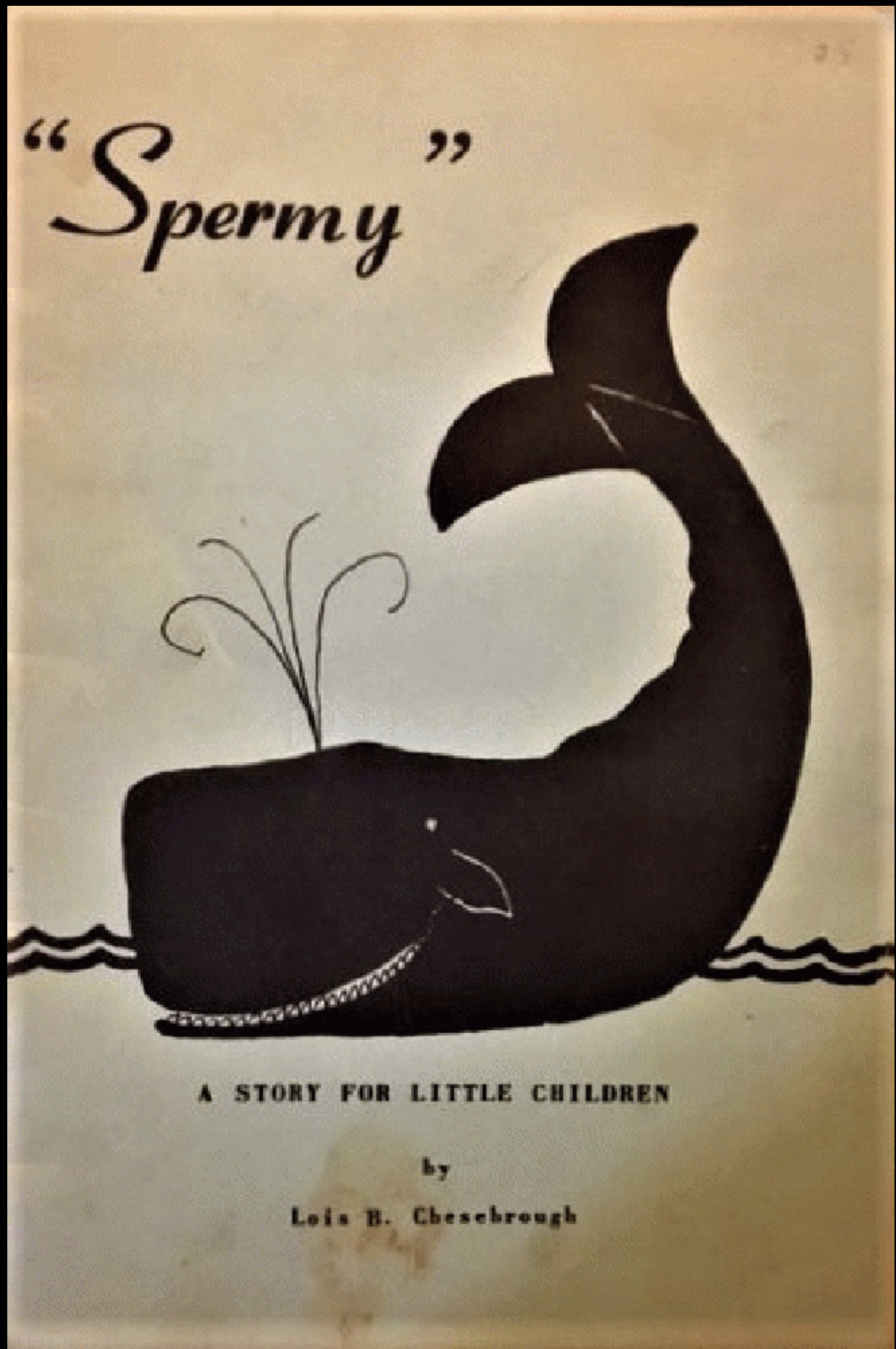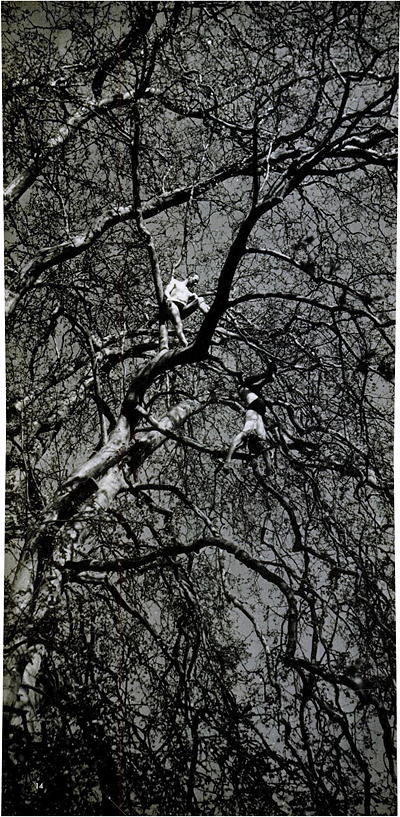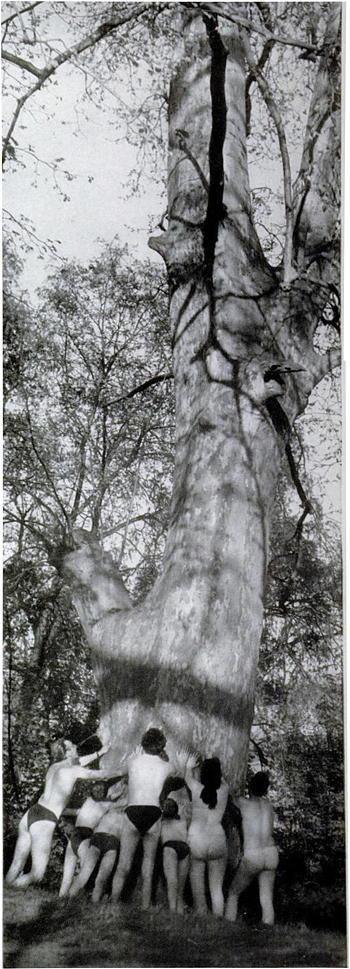Nature
Occupational Hazards of Being a Florist


Posted By: Paul - Sun Feb 25, 2024 -
Comments (0)
Category: Death, Jobs and Occupations, Nature, 1960s
“Washable” Roses
Posted By: Paul - Sun Nov 05, 2023 -
Comments (0)
Category: Domestic, Hygiene, Nature, Camouflage, Counterintelligence, Diversions, Chaff and Fakeouts, Advertising, 1960s
Female mate avoidance behaviors in the European common frog
We posted recently about "misdirected amplexus," which is the phenomenon of male frogs attempting to mate with inappropriate objects (different species, fish, inanimate objects, etc.).Turns out that the weird frog sex behaviors don't end there. Male frogs, in their excitement, will occasionally form "mating balls" — "several male frogs cling to a single female – often killing her in the process."
Some German researchers have now found that female frogs, in turn, have developed defense strategies to protect themselves from over-excited males. They rotate to try to escape the male's grasp; they emit "release calls"; and if those strategies fail to work, they play dead:
More info: "Drop dead! Female mate avoidance in an explosively breeding frog" – technologynetworks.com
(Thanks to Gerald Sacks)
Posted By: Alex - Fri Oct 13, 2023 -
Comments (4)
Category: Animals, Nature, Science, Sex
Ultrasonic Postejaculatory Song of the Male Rat
We posted recently about some odd sexual behavior demonstrated by frogs (their frequent attempts to mate with inappropriate objects). Male rats also display an odd behavior. When they need to rest from mating, they sing an ultrasonic "leave me alone" song.More info: PubMed

Posted By: Alex - Sat Oct 07, 2023 -
Comments (0)
Category: Animals, Nature, Science, Sex
Misdirected amplexus
"Misdirected amplexus" is the scientific term for the curious phenomenon of male frogs attempting to mate with inappropriate objects. Details from the New ScientistFrog mating is often hard to miss. In most species it involves a process called amplexus, in which males grip onto a female tightly for hours or days at a time until the eggs are fertilised. But there are plenty of records of male frogs grappling an unpromising target such as a frog from a different species or a dead individual. One explanation is that such mistakes are more likely to happen in species that breed in large numbers with a low ratio of females to males, and where multiple species occupy the same breeding pond.
I briefly discussed the subject of misdirected mating in the animal kingdom in my book Elephants on Acid. Here's the relevant text:
During the early 1950s, researchers at Walter Reed Army Medical Center surgically damaged the amygdala (a region of the brain) in a number of male cats. These cats became "hypersexual," attempting to mate with a dog, a female rhesus monkey, and an old hen. Four of these hypersexual cats, placed together, promptly mounted one another.
Posted By: Alex - Tue Sep 26, 2023 -
Comments (0)
Category: Animals, Nature, Science, Sex
Spermy
Multiple copies for sale at Abebooks."Published by The Marine Historical Association, Inc., Mystic, CT, 1950. A brief introduction to whales."

Thanks to Richard Bleiler.
Posted By: Paul - Tue Sep 12, 2023 -
Comments (2)
Category: Innuendo, Double Entendres, Symbolism, Nudge-Nudge-Wink-Wink and Subliminal Messages, Nature, Oceans and Maritime Pursuits, Books, Reader Recommendation
Corn Rocks
"Corn rocks" are pieces of lava rock that have impressions of pieces of corn imbedded in them. Geologists have found many samples of corn rocks around the Sunset Crater Volcano in northern Arizona. When the volcano erupted, about 1000 years ago, the people that lived around it were evidently putting pieces of corn in the lava to create these rocks. Why they did this is anyone's guess. Perhaps for religious reasons, or perhaps just for fun.
Source: Google Arts & Culture
Geologists tried to create corn rocks of their own at Kilauea Volcano in Hawaii, but they found it wasn't as straightforward as they had assumed. Putting the corn in the path of a lava flow didn't work. Nor did dropping corn on top of a flow. Geologist Wendell Duffield tells the rest of the story:
Obviously, it would not be safe for humans to carry ears of corn into the fallout zone of a towering lava fountain. A safe setting, however, would be at what geologists call an hornito (means "little oven" in Spanish). An hornito is essentially a miniature volcano that spews molten blobs of melt that fall back to Earth and accumulate into a welded-together chimney-like stack as they solidify and cool...
So, early Native Americans living near the present site of Sunset Crater Volcano witnessed an eruption that at some stage could be safely approached to place ears of corn at the base of an active hornito.
Posted By: Alex - Fri Aug 11, 2023 -
Comments (0)
Category: Nature, Science, Anthropology, Ancient Times
Houses Integrated with Trees
I once ate at a restaurant in Medellin, Colombia, which featured a massive tree in the dining area that grew up through the roof. The urge to blend trees with houses is an ancient one.Here's an instance from 1920.

This article details modern occurences of the motif.

Posted By: Paul - Mon Dec 12, 2022 -
Comments (0)
Category: Architecture, Domestic, Nature, 1920s
Parisian Tree Climbers
After World War II, some Parisians embraced existentialism. Others took to climbing trees in their underwear.Images and text from Life (July 18, 1949).

"Treetop acrobatics are privilege of veteran climbers who go as high as 100 feet above ground"

"Prettiest tree climber is 25-year-old Catherine Arley, an actress specializing in comedy roles"

"Preclimb ritual finds scantily-clad members saluting huge plane tree, which Cofounder Jacques Gall recently described as a 'symbol of heaven.'"
Posted By: Alex - Tue Oct 11, 2022 -
Comments (3)
Category: Fads, Nature, 1940s
Payment in Clams

When the nation's banks closed during the Depression, Leiter's Pharmacy in Pismo Beach, California, issued this clamshell as change.
The 1929 stock market crash triggered banking panics, as people rushed to withdraw their savings before they were lost. In March 1933, President Roosevelt ordered a four-day bank holiday to prevent further withdrawals. To compensate for the currency shortage, communities created emergency money, or scrip. This clamshell was signed as it changed hands and redeemed when cash became available again.
Source.
Posted By: Paul - Mon May 16, 2022 -
Comments (2)
Category: Money, Nature, 1930s

| Who We Are |
|---|
| Alex Boese Alex is the creator and curator of the Museum of Hoaxes. He's also the author of various weird, non-fiction, science-themed books such as Elephants on Acid and Psychedelic Apes. Paul Di Filippo Paul has been paid to put weird ideas into fictional form for over thirty years, in his career as a noted science fiction writer. He has recently begun blogging on many curious topics with three fellow writers at The Inferior 4+1. Contact Us |




